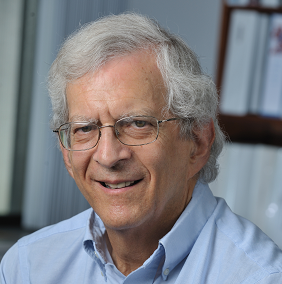I have an early holiday present for those of you who’ve been waiting for this news: NIA’s FY 2019 pay lines for our career development program are 21 for our general allocation and 28 for our Alzheimer’s allocation. These numbers mean that we will pay most general allocation career award applications to the 21 score. We may require some applicants to resubmit within that line, and we may pay one or two beyond that line. The same holds true for the 28 score—for career award applications that focus on Alzheimer’s disease or related dementias.
Robin BARR,
Director, DEA,
Division of Extramural Activities (DEA).
There’s an old saying: “If you want to go fast, go alone; if you want to go far, go together.” That sums up an exciting new NIA-funded resource—the Research Centers Collaborative Network—that promises to advance aging research by bringing different research groups and disciplines together.
Basil ELDADAH,
Supervisory Medical Officer,
Division of Geriatrics and Clinical Gerontology (DGCG).
Dana PLUDE,
Deputy Director, DBSR,
Division of Behavioral and Social Research (DBSR).
The dementia research landscape is wide, varied, and growing. While NIH funds a huge amount of dementia research, we’re not the only funding organization supporting research to understand the underlying mechanisms of age-related dementias, or to identify biomarkers, or to develop and test therapies, or increase knowledge around patient care. Whether you’re a researcher, caregiver, or just interested in learning more about Alzheimer’s research, the International Alzheimer’s Disease and Related Dementias Research Portfolio (IADRP) is a resource you should know about.
Charlene LIGGINS,
Senior Scientific Program Analyst,
Division of Neuroscience (DN).
As you know, NIA’s Strategic Directions document serves several purposes. It acts as a point of reference for setting scientific priorities; a framework for systematic analysis of the NIA’s research portfolio; and a benchmark against which we can assess progress. Perhaps most importantly, the Strategic Directions are a definitive statement of the NIA’s scientific priority areas within the rapidly evolving field of aging research.
Kate NAGY,
Deputy Director, Office of Planning, Analysis, and Evaluation,
Office of Planning, Analysis, and Evaluation (OPAE).
In his blog post of a couple of weeks ago, NIA Director Dr. Richard Hodes mentioned that we would soon be calculating the pay lines for the new fiscal year. I’m happy to announce that we’ve done the math and come up with our initial funding policy for FY 2019.
Robin BARR,
Director, DEA,
Division of Extramural Activities (DEA).
You don’t have to be a Red Sox fan—or even a baseball fan—to look forward to coming to Boston for the annual meeting of the Gerontological Society of America on November 14–18. This is your chance to talk with NIA staff and learn about funding opportunities, ask what might happen to your application, or just shoot the breeze. Many of us will be there, and we look forward to talking with and meeting you (and maybe having some clam chowder or a lobster roll).
We’ve seen substantial expansion of our understanding of Alzheimer’s disease and related dementias in recent years. But we still have a long road to travel. One of the biggest hurdles in our path is recruitment and retention of participants in clinical studies for Alzheimer’s disease and other dementias.
Amid all the news coming out of Washington these days, you may have heard that, for the first time in decades, a portion of the Federal budget was passed by Congress and signed into law by the President at the beginning of the 2019 fiscal year.
I’m very pleased to report that only seven short years after taking our first steps in geroscience, we’re now ready to expand the reach of the field into new areas with a third Summit on Geroscience. While the concept of geroscience has been well accepted within the aging biology research community, the goal of the upcoming Summit is to extend our reach into new areas of scientific endeavor and to involve new participants, including disease advocates and policymakers.
Felipe SIERRA,
Division Director,
Division of Aging Biology (DAB).
As we look forward to a bevy of fall activities, I’d like to update you on some of the Office of Special Populations’ (OSP) recent happenings and activities. Read on to find out what we’ve been doing and what we’re planning for the near future.
Carl V. HILL,
Director, Office of Special Populations,
Office of the Director (OD).













